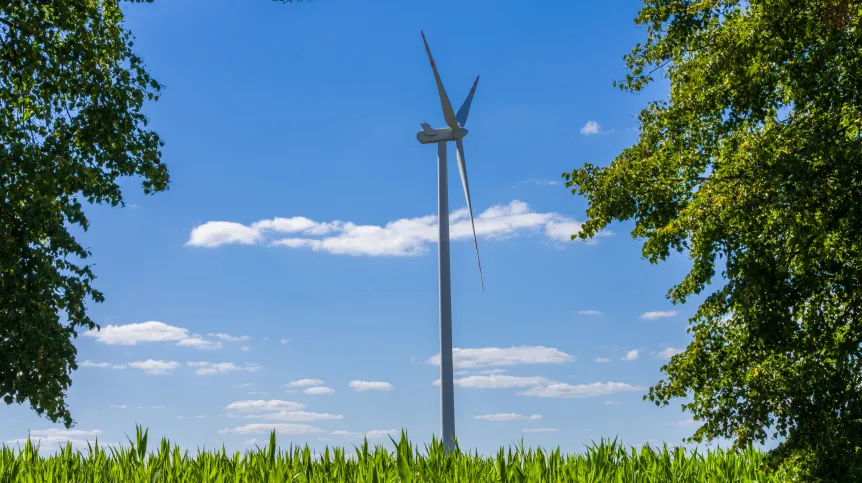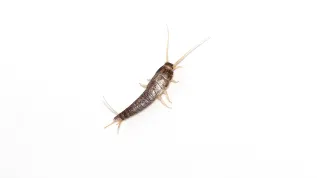
For 7 years, Poznań scientists will conduct globally unique research on the activity of birds and bats in various parts of the forest, and verify the methods for assessing the impact of wind turbines on the environment. They will use a radar-optical system, acoustic sensors and drones.
Head of Department of Zoology at the University of Life Sciences in Poznań, Professor Piotr Tryjanowski, who is leading the research conducted on behalf of the State Forests, says that the scientists began the part of the project concerning birds in October. At the current stage, the research consists of checking areas - 1 square km each - in a total of 104 locations in eight forest districts in the Wielkopolska, Lubusz and West Pomeranian provinces. In a dozen of these places, wind turbines could potentially be built in the future.
'For now, we have been assessing the number and composition of winter avifauna, i.e. the number of species and quantitative ratios, and their dependence on the specific environment. We want to see whether there are fewer birds in poorer tree stands, and more in richer ones, and how this compares to other ecosystems in Poland', he says.
Tryjanowski adds that the unique system of towers used in our country in the forest fire detection system great facilitates the research.
'We have acoustic sensors on each of these towers, which simultaneously, 24 hours a day, 365 days a year, record the sounds made by birds and bats. The sensors hang at a height of about 1.8 m above the ground, which simulates a person studying the environment, but also 15 m above the ground and above the treetops. We have also placed detectors on trees. In this way, we can compare what is happening in different parts of the forest', he describes.
According to Tryjanowski, the research conducted by Poznań scientists is already the largest of its kind in the world in terms of the number of acoustic sensors used simultaneously. He adds that in March, the researchers finished placing acoustic detectors on the towers. In his opinion, the results will most likely show that previous work based on research conducted by people at ground level does not reflect the activity of birds and bats recorded above the treetops.
'Our research is not intended to answer a specific, applied question about the possible future locations of wind turbines. It answers scientific questions - how to measure it, whether we are able to assess the quality of the environment in terms of the presence of wind turbines, how to do it, whether the methods used so far were poor, whether something better can be proposed', the scientist says.
The project will continue for a total of seven years. Tryjanowski says that if wind turbines are indeed built in forest areas, it will be in 3-4 years. 'I hope that by then we will be able to assess the impact of wind turbines on birds and bats. That is why we are creating so many control points and choosing those places where we know that in the future the State Forests would like to place a few or a dozen turbines', he points out.
According to the project assumptions, when the State Forests provide the investor with a forest area for setting up a wind farm, Poznań scientists will examine bird activity in a given location in an identical manner. 'We will compare what happened in the place where the turbines were placed - and they are to be the tallest available on the market, up to 300 m high - and what the situation is like in locations where such wind turbines have not been placed', the researcher explains.
He adds that the investment area will also be monitored during construction, to check, for example, the impact of noise and the cranes used in the construction of the structure.
In addition to traditional methods and acoustic sensors, in their research Poznań scientists want to use drones, balloons, and from autumn also a special radar coupled with an optoelectronic set.
'Thanks to radar, we can recognize - by size or flight characteristics - only some species, but not necessarily small birds. For this we need optical identification. That is why we have also designed cooperation with a camera system that will record the image, but due to the movement of the tower and the different speed of propagation of light or radio waves, the system components must be synchronised to the fraction of a second', the researcher describes.
Scientists hope that thanks to various tools they will be able to control an area reaching a height of 200-400 m above ground level.
Tryjanowski emphasises that to analyse the collected data, due to their quantity, researchers must use programs based on advanced artificial intelligence.
He points out that building wind farms in or on the outskirts of forests is very popular in Germany, Sweden and Finland, where - as he emphasises - turbines are even located in national parks. He admits that in these countries scientists practically do not study the impact of wind energy on forest birds.
He adds that it is a known fact that birds and bats are to some extent scared away by wind turbines, and sometimes die due to collisions with their blades.
'However, the scale of this is not as huge as some people think. If we analyse the data from bird ringing and compare the causes of death of monitored individuals, there are practically no cases caused by wind turbines. The main sources of bird mortality are cats and tall buildings. Besides, there is no type of energy that is environmentally cost-free, you just have to approach the profit and loss calculation honestly', the scientist says.
The cost of the seven-year study - approx. PLN 17 million - will be fully covered by the State Forests. (PAP)
szk/ aszw/













